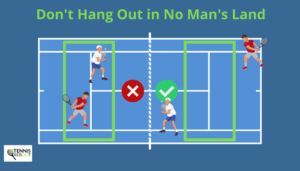
Kicking off with Team sports injury prevention, this opening paragraph aims to shed light on a crucial aspect of athletic performance. Engaging in team sports is not just about competition and camaraderie; it’s also about ensuring players remain safe and healthy throughout the season.
From effective warm-up techniques to understanding the common injuries that athletes face, a comprehensive approach toward injury prevention is essential. Proper equipment, awareness of legal considerations, and tailored strategies for different sports can significantly minimize the risks involved, ensuring that all players can focus on their game without the looming threat of injury.
Team Sports Injury Prevention Strategies

Injury prevention in team sports is crucial for maintaining player health, team performance, and overall enjoyment of the game. Implementing effective strategies can significantly reduce the risk of injuries, allowing athletes to perform at their best while minimizing downtime from the sport. This section delves into effective warm-up techniques, common injuries in team sports, and the importance of proper equipment.
Effective Warm-Up Techniques
A well-structured warm-up routine is essential for preparing athletes for the physical demands of team sports. Warming up increases blood flow to the muscles, enhances flexibility, and reduces the risk of injury. Effective warm-up techniques can include:
- Dynamic Stretching: Involves moving parts of your body and gradually increasing reach, speed of movement, or both. Exercises like leg swings, arm circles, and walking lunges are effective.
- Sport-Specific Drills: Engaging in drills that mimic the movements of the sport helps athletes get accustomed to the actions they will perform during the game. For instance, soccer players might practice dribbling and passing.
- Gradual Increase in Intensity: Start with low-intensity activities and gradually increase the intensity to prepare the body for the exertion required during competition.
Common Injuries and Their Prevention Methods
Understanding common injuries in team sports and implementing prevention methods is key to athlete safety. Here are a few prevalent injuries and ways to prevent them:
- Sprains and Strains: Often occur in the ankle or knee. Prevention includes strengthening exercises, proper footwear, and avoiding playing on uneven surfaces.
- Fractures: Can occur from falls or collisions. Utilizing protective gear, like shin guards or pads, helps minimize the risk.
- Concussions: Common in contact sports. Education on recognizing symptoms and implementing rules to reduce head impacts can help prevent these injuries.
Importance of Proper Equipment
Proper equipment plays a vital role in preventing injuries in team sports. Ensuring that all players have access to and use appropriate gear can significantly reduce the risk of injury.
Using well-fitted, sport-specific equipment minimizes injury risk and enhances performance.
Key aspects of proper equipment include:
- Footwear: Proper shoes designed for the specific sport can provide better traction and support, reducing the risk of ankle injuries.
- Protective Gear: Items like helmets, mouth guards, and pads are essential for contact sports to protect against severe injuries.
- Regular Maintenance: Regularly checking and maintaining equipment for wear and tear ensures optimum safety during play.
Legal Considerations in Team Sports Injury
Legal issues surrounding team sports injuries involve a complex interplay of liability, safety regulations, and protective documentation. Understanding these aspects is crucial for coaches, organizations, and players alike, as they navigate the potential risks associated with team sports participation. From liability concerns to the effectiveness of waivers and consent forms, legal considerations play a significant role in promoting a safer sporting environment.
Liability Concerns for Coaches and Organizations
Coaches and sports organizations have a legal responsibility to ensure the safety of their players. Liability arises when a coach or organization fails to provide a safe environment or neglects to act reasonably in preventing potential injuries. The following points highlight key considerations regarding liability:
- Duty of Care: Coaches must exhibit a reasonable standard of care, ensuring that practices and games are conducted safely.
- Negligence: If a coach or organization is found negligent—such as ignoring safety guidelines or failing to address hazardous conditions—they may be held liable for any resulting injuries.
- Vicarious Liability: Organizations can be held vicariously liable for the actions of their coaches and staff, emphasizing the need for proper training and oversight.
Role of Waivers and Consent Forms
Waivers and consent forms are essential tools in the legal landscape of team sports. They serve to inform participants of potential risks and to protect coaches and organizations from legal repercussions stemming from injuries. Here are important aspects related to waivers and consent forms:
- Informed Consent: Participants must be made aware of the risks associated with their sport, which can be documented through consent forms.
- Enforceability: For waivers to be enforceable, they must be written clearly and comprehensively, stating the risks involved and the participant’s agreement to assume those risks.
- Limitations: Waivers do not typically protect against gross negligence or willful misconduct, which means organizations must still prioritize player safety.
Regulations Governing Safety Standards
Various regulations govern safety standards in team sports to minimize injury risks and protect athletes. These regulations can vary by sport and region, but they generally include:
- Equipment Standards: Many sports have specific regulations regarding the type and condition of equipment used, such as helmets in football or protective gear in ice hockey.
- Facility Safety: Regulations often dictate the safety and maintenance of playing surfaces, including field conditions and facility features to reduce injury risks.
- Medical Protocols: Guidelines may require the presence of certified medical professionals during practices and games to handle injuries promptly and effectively.
“Understanding legal considerations in team sports injury prevention helps create a safer environment for players, coaches, and organizations alike.”
Injury Prevention across Various Sports Disciplines
Injury prevention varies significantly across different sports disciplines, taking into account the unique demands, risks, and environments associated with each. Understanding these distinctions is crucial for athletes, coaches, and healthcare professionals aiming to implement effective strategies tailored to specific sports. This discussion will delve into the comparative injury prevention strategies in team versus individual sports, specific methods for martial arts, and techniques relevant to water and winter sports.
Comparison of Injury Prevention Strategies in Team Sports and Individual Sports
In team sports, injury prevention strategies often focus on group dynamics, communication, and collaborative training methods. These strategies include:
- Regular Team Assessments: Conducting joint physical assessments to identify individual strengths and weaknesses, allowing for tailored training sessions.
- Injury Monitoring: Keeping track of injury prevalence within the team to identify common risks and adjust training schedules accordingly.
- Team-based Warm-ups: Implementing standardized warm-up routines that address common injuries specific to the sport.
In contrast, individual sports emphasize personal responsibility and tailored training regimens. Key strategies include:
- Personalized Training Programs: Creating individualized training plans based on the athlete’s specific needs and injury history.
- Biomechanical Analysis: Using technology to analyze movements, helping to identify risk factors that could lead to injury.
- Self-Management Education: Teaching athletes about injury signs and symptoms to empower them to seek timely intervention.
Injury Prevention Methods Specific to Martial Arts
Martial arts come with unique risks, including high-impact collisions and joint stress. Effective injury prevention methods in this discipline include:
- Proper Technique Training: Emphasizing correct form to reduce the risk of accidental injuries during sparring or competition.
- Protective Gear Usage: Mandating the use of appropriate protective equipment such as headgear, shin guards, and mouthguards to minimize injury severity.
- Gradual Sparring Progression: Implementing a tiered approach to sparring intensity, allowing practitioners to adapt and reduce the risk of overuse injuries.
Injury Prevention Techniques in Water Sports and Winter Sports
Water and winter sports each have distinct environmental and physical challenges that necessitate tailored injury prevention techniques. In water sports, strategies focus on:
- Hydration and Nutrition: Emphasizing proper hydration and nutrition to enhance performance and reduce fatigue-related injuries.
- Conditioning for Balance: Engaging in exercises that improve core stability and balance, crucial for reducing falls and collisions.
- Skill Development: Prioritizing skill refinement to ensure athletes can handle unpredictable conditions such as waves or currents safely.
For winter sports, where cold exposure and high-speed descents are common, effective techniques include:
- Layered Clothing: Advising athletes to wear appropriate clothing to maintain body temperature and reduce the risk of hypothermia.
- Pre-Season Conditioning: Encouraging off-season training to build strength and endurance, which can help manage the physical demands of snow sports.
- Technique Coaching: Providing specialized coaching to enhance skills like turning and stopping, minimizing the risk of falls and collisions.
“Injury prevention is not just about avoiding injuries; it’s about promoting overall athletic health and performance.”
Final Review

In conclusion, prioritizing Team sports injury prevention not only enhances players’ performance but also fosters a safer sporting environment. By implementing effective strategies and understanding the importance of equipment and legal responsibilities, coaches and organizations can create a culture of safety that benefits everyone involved. Keeping these factors in mind can help ensure that athletes enjoy their time on the field while minimizing the risk of injury.
Questions and Answers
What are some common injuries in team sports?
Common injuries include sprains, strains, concussions, and fractures.
How can warm-up techniques help prevent injuries?
Warm-up techniques improve flexibility, increase blood flow, and prepare muscles for physical activity, reducing the risk of injury.
What role does proper equipment play in injury prevention?
Proper equipment, such as helmets and pads, provides essential protection and can prevent serious injuries during play.
Are waivers effective in preventing legal issues?
Waivers can provide some legal protection, but they may not fully absolve organizations of liability in all situations.
How do injury prevention methods differ between team and individual sports?
Team sports focus on collaborative strategies and shared responsibilities, while individual sports often emphasize personal training and technique refinement.





